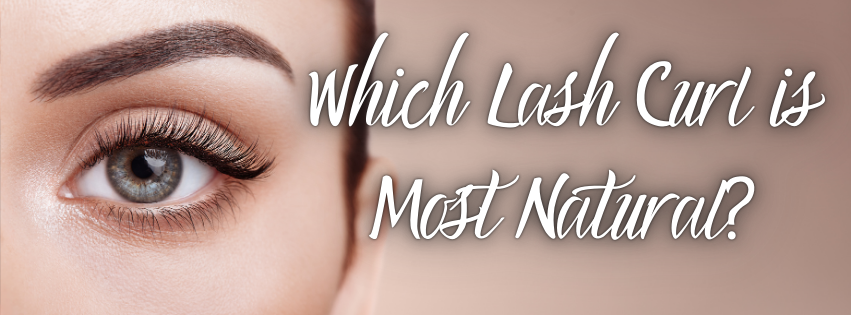Your Bag is Empty
- Eyelashes
- Glue & Remover
- Application Tools
- After Care
- Eyebrows
- Skin Care
- DIY
- More
If you’re chasing a barely-there beauty boost, you’ve probably found yourself asking: Which lash curl is most natural? With so many lash curl options available—J, B, C, D—it can be overwhelming trying to figure out which one gives that effortless, “your-lashes-but-better” effect.
Let’s get into the details and break down the most natural lash curl options, how to choose them based on your eye shape and lash direction, and how to complement them with the right lash type and styling.
When it comes to mimicking the soft, natural curve of your real lashes, J curl takes the crown. It offers the gentlest curve of all lash extension styles, delivering a subtle lift that enhances the eyes without drawing too much attention.

If you're after a super soft enhancement—maybe for everyday wear or professional settings—this is your best bet.
If you want just a touch more drama without stepping into obvious-extension territory, B curl is another strong choice.

This is a common question—and the answer is clear: C curl is more natural-looking than D curl. C Curl: Offers a smooth, moderate curve that enhances the lashes while still resembling a natural lash pattern. It’s perfect for people with slightly curved or straight lashes who want a little extra lift. D Curl: Far more dramatic, D curls have a sharper bend that creates a wide-eyed, glam effect. They’re beautiful, but definitely not “natural-looking.” If you’re aiming for natural, stick to C, B, or J curls, and save the D curls for bold, special-occasion looks.
If you're deciding between lash extension styles, Classic lashes are your best bet for a natural look. Classic Lashes: These involve applying one extension to each natural lash. The result is a clean, simple enhancement that closely mirrors the appearance of mascara or naturally thick lashes. Hybrid Lashes: A mix of classic and volume fans, hybrid lashes create a fluffier, more textured look. They're beautiful, but typically appear fuller and less natural. So if your goal is minimal, barely-there beauty, classic is the way to go.
Lash material also plays a huge role in how natural your extensions look. For a believable finish, opt for: Faux-Mink or Silk: These materials are soft, flexible, and have a slight sheen—closely mimicking the texture of natural lashes. Avoid Synthetic/Plastic: While long-lasting and dramatic, these lashes tend to be thicker and shinier, which can give away your lash extension secret.

If you’re not wearing extensions and want to curl your own lashes for a natural look, technique and tool choice matter: Use a High-Quality Lash Curler: Opt for one with a curved edge that fits your eye shape comfortably. Start at the Base: Gently press and hold at the base of your lashes, then pump as you move toward the tips. Don’t Over-Curl: One or two soft pumps are enough—too much curling can make lashes look crimped and unnatural. Finish with a Light Mascara: Choose a brown or dark brown mascara for the most subtle finish, and focus on the roots for volume.
Ultimately, the most natural-looking lash curl depends on your unique eye shape, lash direction, and desired level of enhancement. But as a rule of thumb: J Curl = Most natural and subtle B Curl = Slightly more lift, still natural C Curl = A happy medium, soft glam D Curl = Bold, dramatic, not for a natural look Pair your curl with classic application and faux-mink materials, and you’ve got a flawless, natural-looking set that enhances your beauty without overpowering it. So the next time you're sitting in your lash artist’s chair or shopping for a lash kit, you’ll know exactly what to ask for to get that fresh-faced, effortless lash look.
Comments will be approved before showing up.
Today is Rare Disease Day—2025! At GladGirl, we’re proud to stand alongside families affected by rare disorders, raising awareness and supporting critical research. This year, we’re donating 10% of all sales today to the NBIA Disorders Association, helping to fund research, provide support, and raise awareness for ultra-rare conditions like BPAN.

